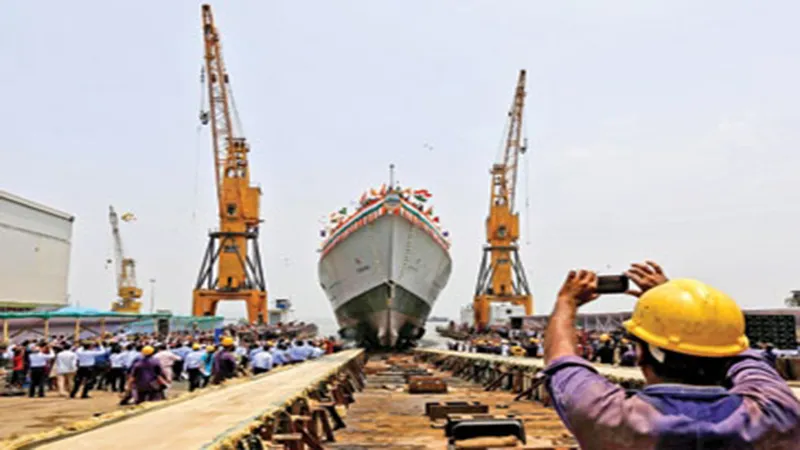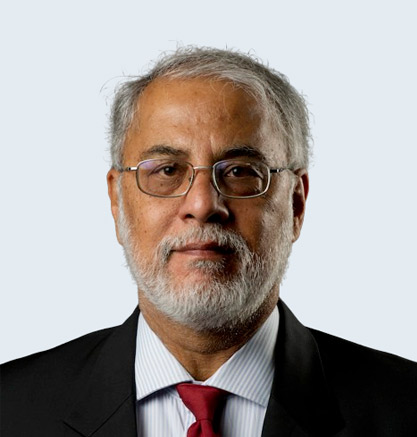2020 is just five years from now. There is nothing we can do today - acquire a new weapons system, reorganise the command system for our armed forces, initiate the Make in India policy - which will make a difference to our current predicament, which is that we do not have armed forces which are capable of fighting a war. We know that while China may or may not become party to an Indo-Pak conflict, Pakistan will almost certainly take advantage of any Sino-Indian confrontation.
All three services have a huge list of things they need to modernise themselves. Almost all claim that if they are supported by budgets, they will complete their modernisation by 2027. But you can be sure that this date will continue to slop. New systems, even if they are acquired today, will take years before they are properly assimilated into the armed forces and their utility validated through repeated exercises.
Likewise, a much needed shake up of the way we manage our armed forces by integrating the armed forces headquarters and the civilian Ministry of Defence, as well as by creating a new position of a Chief of Defence Staff will not get enough time to be functioning smoothly by 2020.
As for Make in India, we are yet to receive the new Defence Procurement Policy promised by Defence Minister Manohar Parrikar, which will, hopefully, trigger off the process. But you can be sure, by 2020 we cannot achieve much because of the mess we are in right now.
Indian Air Force
By 2020, the IAF will still be in free fall in terms of numbers. Even if the deal for 36 Rafales is signed this year, the first aircraft will only start coming in two years from now. In any case, the Rafales will not be able to make up for the retirement of the IAF's 3 Mig 21M and 4 Mig 27 squadrons. They will get three more Sukhoi 30 squadrons, but the LCA, which was supposed to make up the numbers, will not be there. By that time, the bulk of the Air Force will comprise of Sukhoi 30s, a heavy twin engine fighter with high life-cycle and operational costs. Another problem for the IAF is the obsolescence of India's SAM network. Only by 2020 will the IAF begin acquiring its first MRSAM surface-to-air missiles.
While in-flight refuelling, airborne early warning and electronic support aircraft will make the Air Force more potent, the problem of numbers will remain, given the size of the country and the increasing challenges from China in the Indian Ocean region, as well as from the growing Pakistan-China linkages.
Indian Navy
In 2012, the government approved of a Navy of 198 ships and submarines. The present level is some 127 ships, 15 submarines and 236 aircraft. If the government is able to push through its ambitious plans to involve the private sector shipyards into naval construction, this target can be met by 2020. This is an important goal, because since 2014, we have been witnessing a sharp growth of Chinese interest in the Indian Ocean.
India will have to decommission INS Virat next year or the year after, leaving it with the Vikramaditya. Hopefully, the indigenous new Vikrant will be ready by 2020.
The aircraft carriers will be supported by a network of surface ships, including 30 destroyers and frigates, some of them very advanced like the INS Kolkata. Though the Navy would equip several destroyers with the Brahmos, its range is such that land-based targets would require the ships to be dangerously close to the shore to deliver their weapons. The longer range cruise missile Nirbhay has been tested in October 2014, but it will take another five years for full development.
With the INS Kalvari, the first Scorpene class submarine being floated, the Navy is now hoping that it will receive the balance of the five submarines by 2012. This will certainly be a boost for the Indian Navy's sub-surface attack capabilities, which currently comprises 9 Kilo-class submarines, 4 HDW subs and a leased Russian nuclear-powered attack submarine. There is talk of India leasing another vessel of the same kind. However, the delay in approving the Project 75I will ensure that the submarine fleet will remain below par till 2025 at least.
Indian Army
The huge Indian Army had hoped that its modernisation would be moving at a fast pace in this decade. But nothing seems to be happening. While there has been some movement in the acquisition of artillery guns, there are a range of areas, including the need to get a better assault rifle for the infantryman, which are still stuck.
The one area in which the Army is hoping it will lick by 2020 is that of its ammunition. In recent years, shortage of important ammunition, such as the anti-tank ammunition used by tanks, has resulted in poor readiness levels of the Army. The Army imports some 30 different kinds of ammunition, but the problem is often with the quality of the ammunition manufactured by the ordnance factories.
Another area in which the Army hopes it will have overcome its problems is that of night-vision devices. Bharat Electronics Ltd does manufacture devices of an older generation, but is now in the process of making the next generation of devices through collaboration.
There is one area in which the Army planning is coming unstuck. This is the Mountain Strike Corps. Earlier this year, the Defence Minister announced that the government was halving the number of personnel of the Corps, which was under raising because of fiscal worries which had resulted in the Army using its War Wastage Reserves to equip the Corps. The WWR is meant to be used for war fighting and its use in this manner has reduced the readiness levels of the Army. Hopefully, by 2020, this issue will be overcome.
The one big problem that the Army faces is the growing size of its manpower. In 2020, if the 12th Plan figures are anything to go by, the Army will include 88,000 more personnel, along with 2,200 civilians.
Resources will constrain the modernisation drives of the three services. The government has not been able to check the growth of manpower in the Army and paramilitary forces. This has a direct repercussion on the modernisation plans of the military as sufficient money is not available. As the Standing Committee on Defence has noted in a report that the funds for modernisation provided by the government in the 11th Plan (2007-2012) period was not only inadequate, but was actually decreasing for the last two years of the plan. Hopefully, the current 12th Plan and the subsequent 13th Plan will see a boost in the spending for modernisation.
The other problem is that decades of poor management and ad hocism have led to a bunching of demands which are next to impossible to meet. For example, last year, the Air Force demanded Rs 62,408 crore for its capital acquisitions, while it was allotted Rs 33,710 crore. The story is the same in the other Services.
The bottom line is the need for drastic reform of the manner in which the Ministry of Defence and the three armed forces are managed and run.
There is one area in which progress will be slow and steady - India's nuclear forces. By 2020, the INS Arihant will provide the third leg to India's nuclear triad and, hopefully, the second ballistic missile submarine will be launched. By that time, India will also move further ahead in deploying its Agni V ballistic missile in canisters, thus enabling them to be carried on trucks or railroad cars. Trends are difficult to predict, but India may move ahead in developing MIRV warheads for its Agni missiles.
(The writer is a Distinguished Fellow at Observer Research Foundation, Delhi)
Courtesy: Sunday Guardian, July 26, 2015
The views expressed above belong to the author(s). ORF research and analyses now available on Telegram! Click here to access our curated content — blogs, longforms and interviews.

